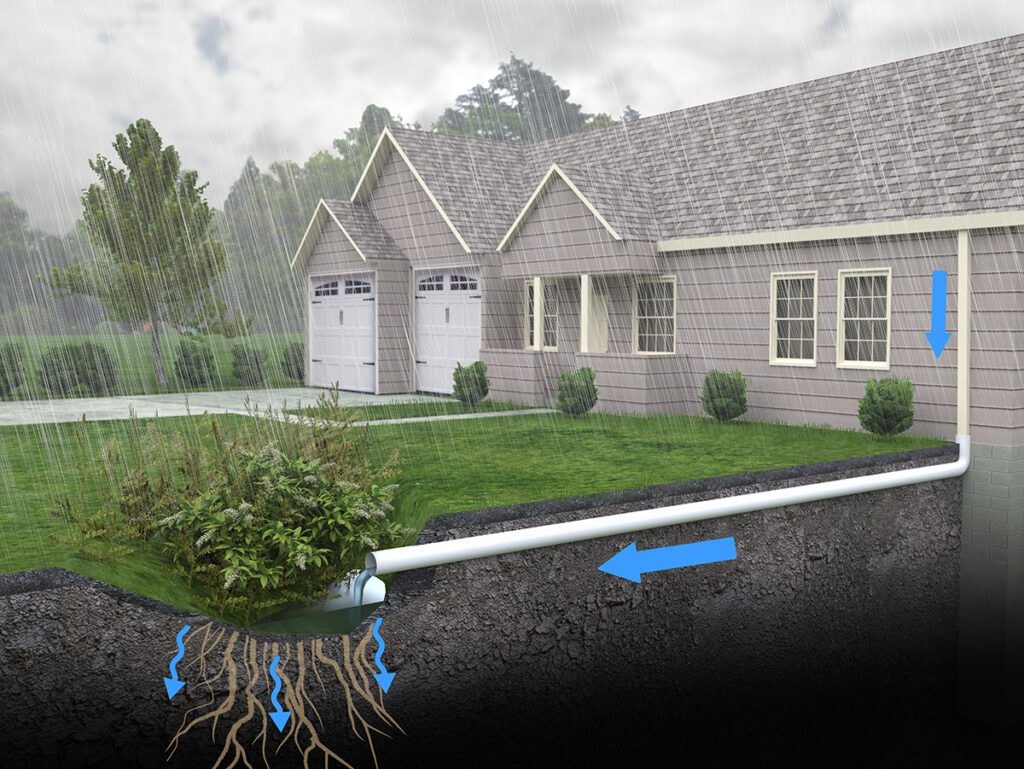Sewage pipes and storm drains are often confused, despite their significant differences. This confusion not only leads to misunderstandings but can also have detrimental effects on the environment and the city’s infrastructure. We will outline the major distinctions between sewage pipes and storm drains and emphasize the importance of their proper maintenance.
Storm Drains and Storm Sewers

When it comes to storm drains, their primary purpose is to carry rainwater or melted snow. These stormwater drains are typically built into roadside curbs, alleys, or basement floors. They operate by channeling water through an underground system to eventually flow into nearby rivers, streams, or the ocean. It is important to note that storm sewers carry untreated drain stormwater runoff, meaning that the water reaching the destination is the same as when it entered the system.
Sewer Lines
In contrast to a stormwater drain, sanitary sewer lines transport sewage from underground pipes to a nearby water treatment facility. These systems collect waste from sources such as bathrooms, sinks, kitchens, and other plumbing fixtures. It undergoes treatment at a dedicated facility before releasing the water into rivers or oceans. The NPDES mandates strict standards and regulations to ensure the discharged water is safe for the environment.
What Potential Issues Should You Watch Out for with Storm Drains?
When hazardous liquids or other materials enter the storm drain system, they can pollute water sources downstream. Substances like motor oil, gasoline, paint, or cleaners harm the environment and wildlife. Grass clippings, leaves, and garbage can clog storm drains, leading to potential flooding. To mitigate these risks, follow these tips:
- Do not litter in storm sewer drains
- Fix any leaks in your vehicle as soon as possible
- Recycle motor oil and properly dispose of any hazardous waste
- Do not pour anything except water into a storm drain
Why Is Sewer and Drain Maintenance Important?
Biros Septic & Drain Cleaning offers exceptional professional sewer and drain cleaning services. If you do not clean your drains often, all the gunk, hair, food particles, soap, and more can build up causing problems with your sewage lines and pipes. That is why it is important to clean the sewers and drains regularly. This routine maintenance will help avoid more expensive problems that could damage your home.
Regularly cleaning your drains is important to extend their lifespan and prevent damage from clogs and backups inside of your home. This cleaning will also keep your sewer and septic system free of blockages, reducing the risk of damaging sewer pipes or needing replacements.
What Are the Proper Repair Methods for Sewer Systems?
With Biros Septic & Drain Cleaning, you can ensure the best maintenance and repair for your sewer line connections. We employ various methods for cleaning sewer lines, including evaluation of system components, CCTV sewer inspections, and a Hot Jet machine to clear clogs in sewer lines. This approach eliminates clogs, minimizing destructive forces that can compromise the sewer system. Schedule your appointment today to open your sewer lines!
Get Your Sewage Pipe Checked with Biros Septic & Drain Cleaning
Understanding the difference between sewage pipes and storm drains can help you protect the environment and keep your community healthy. By preventing the contamination of water sources and properly managing storm drain and sewer systems, your drain system will contribute to the well-being of our cities, communities, and wildlife. Remember, just as we keep hazardous materials out of storm drains, keeping your sewer lines free of harsh chemicals for blockage and backups to maintain water systems is equally important.
For more information about how Biros Septic & Drain Cleaning can check the health of your residential or commercial sanitary sewers, please feel free to contact us and learn how we can assist you in achieving efficient and cost-effective repairs.

